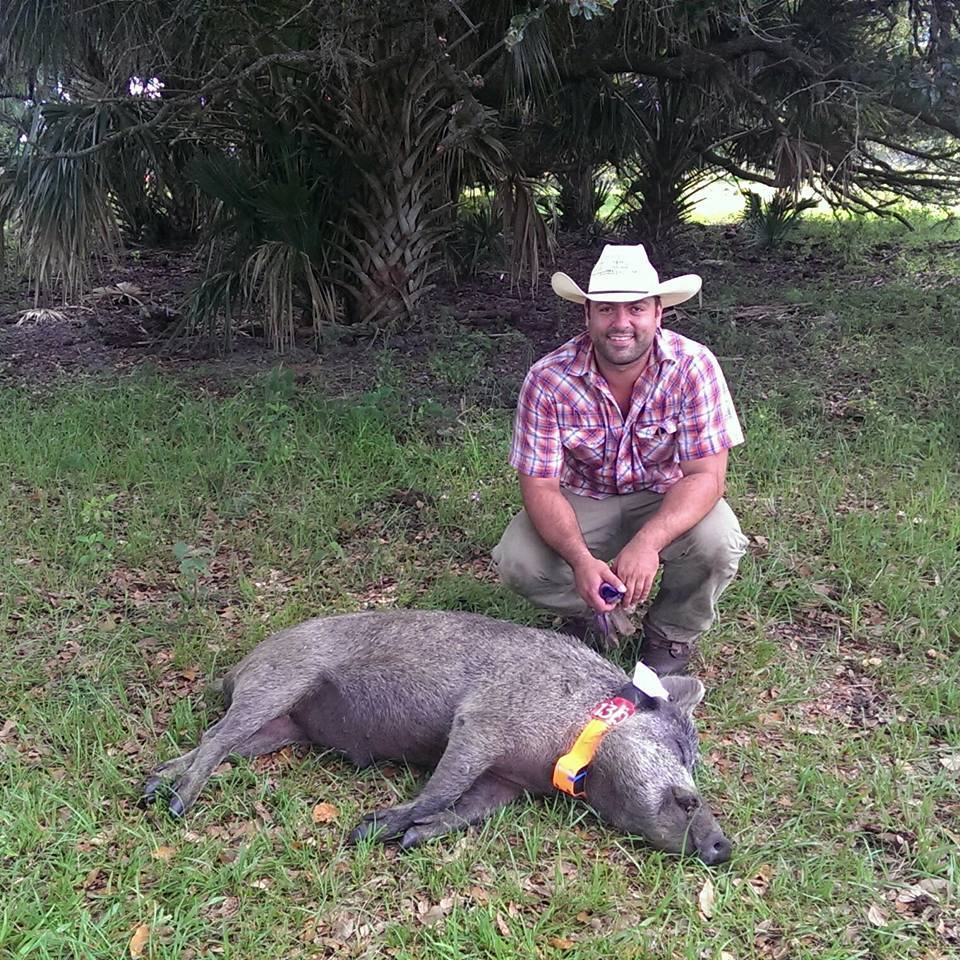by Wes Anderson, PhD Candidate
UF/IFAS Range Cattle Research and Education Center

As my time in Florida draws to a close, I’m excited to share the research I’ve conducted over my years as a PhD student at UF. I began assisting with research at Buck Island Ranch in 2014 and conducting my own research there in 2016. After 2.5 years of working and living full-time on site, this 10,000+ ac. ranch in Highlands Co. came to be the singular place I know better than anywhere else in the world. Spending summers waist-deep in water under the Florida sun isn’t without its challenges, but I still feel fortunate to have had the opportunity to conduct research there.
Rangelands account for ¼ of the world’s land area. For effective wildlife conservation to occur, we must take into account how to best manage these lands and their wildlife along with our protected areas like state and national parks. Invasive species are an impediment to effective conservation across the globe. Wild pigs are an invasive species in Florida and can be particularly destructive through their rooting activities. While wild pig impacts continue to be studied there is a lack of research on their impacts to aquatic wildlife. Recognizing that issue, I chose to focus my dissertation research on those potential impacts to wetlands and wildlife across a Florida cattle ranch.
I’ve had four primary projects while conducting my research. Those include:
- Genetic analysis of wild pig fecal samples to assess diet and seasonal variation in diet
- Drone flights to measure amounts of pig rooting across multiple years
- Trapping of salamanders and other aquatic fauna in study wetlands to examine both indirect and direct impacts by pigs as well as impacts by aquatic invasives
- Tadpole sampling in study wetlands to assess indirect impacts of rooting
Please watch my recent Ona Graduate Student Highlight to learn more about these studies and hear some initial findings from this research.
Ona Graduate Student Highlight with Wes Anderson
“Impacts of an Invasive Ecosystem Engineer Upon Wetlands and Aquatic Communities Across a Subtropical Agroecosystem” –
watch now: https://www.youtube.com/watch?v=BZyKro71TIQ
recorded: 12/08/2020
Slides: click here to access a printable pdf of Wes’s presentation
Questions?
Contact Wes at wesleymanderson@ufl.edu.
Pictured in the header: a greater siren (siren lacertina), a type of salamander sometimes found in aquatic communities.
 0
0
